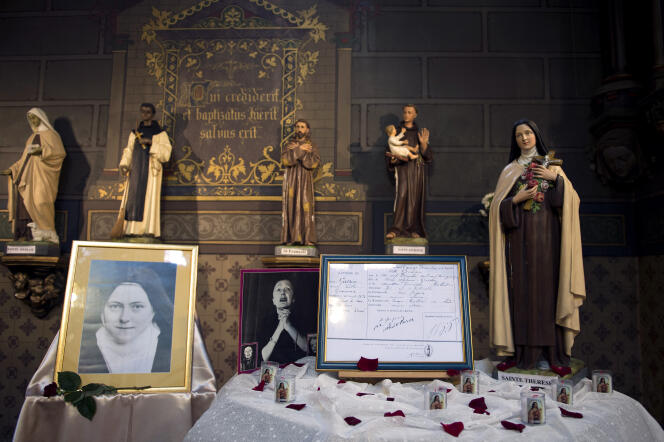


"In heaven, I will find Thérèse." A few days before her death in 1963, Edith Piaf is said to have said these words to her entourage. "Thérèse" is Thérèse of Lisieux (1873-1897). All her life, the singer nurtured an intense devotion to her. This piety was born of a miracle. At least Piaf was always convinced that this was what it was all about.
As a child, Edith Giovanna Gassion (her birth name), born in 1915 into a poor family neglected by an alcoholic mother, suffered from serious sight problems, probably owing to an inflammation of the cornea called keratitis, linked to a lack of care and hygiene. Her paternal grandmother, who in 1917 took her in, was determined to do everything in her power to cure her granddaughter.
Louise-Léontine Gassion had an unusual profile: She ran a brothel but was also a devout Christian. Based in Bernay in Normandy, some 30 kilometers from Lisieux, she had heard a lot about a certain "Sister Thérèse de l'Enfant Jésus," who had died two decades earlier and had already been credited with miracles. Louise-Léontine became convinced that her granddaughter could benefit from her healing powers.
The rest of the story is known to us from various testimonies and interviews with the singer, recounted in various biographies, including the recent book Piaf. Un cri vers Dieu ("Piaf: A Song to God") by Catholic writer Pierre Fesquet.
On the morning of August 19, 1921, taking her and all her "daughters" with her, the grandmother madam led a surprising pilgrimage to Lisieux. After mass in the cathedral, the troupe of sex workers and young Edith headed for the Carmel cemetery.
There, according to the stories, they knelt before Thérèse's grave, which had no headstone, only earth. In the midst of her prayers, Louise-Léontine took a handful of earth and slipped it into her bag. Back in Bernay, she rubbed Edith's eyes with the cemetery dirt.
A few days later, Edith, then aged 5, burst into the middle of the lounge, among the girls and their customers. Her eyelids were no longer glued shut by secretions. Her eyes were wide open, and she could see! For the young child, as for her grandmother, there was no doubt: Thérèse had restored her sight.
Whatever one thinks of this account – some biographers believe that Edith Gassion was still suffering from eye disease at the age of 8, others claim that she had never really lost her sight and still others that her recovery was linked to wearing a black bandage for a week after her pilgrimage – it is certain that it had a considerable influence on the future singer.
You have 45% of this article left to read. The rest is for subscribers only.
